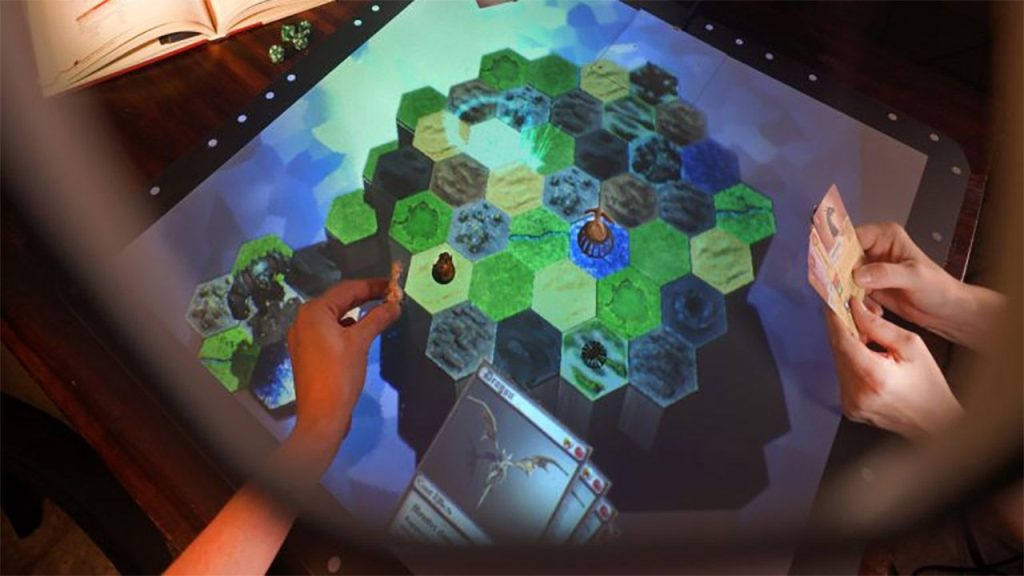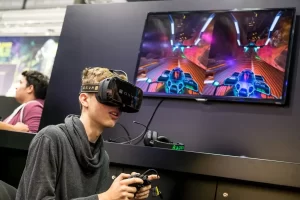
Board games have always been a popular form of entertainment, bringing families and friends together to engage in friendly competition. Over the years, technology has evolved and revolutionized the way we play games. With the emergence of augmented reality (AR), the world of board games has been taken to a whole new level. In this article, we will explore the integration of augmented reality in board games and how it enhances the overall gaming experience.
1. The Rise of Augmented Reality:
In recent years, augmented reality has gained immense popularity across various industries. From mobile applications to retail experiences, AR has proven to be a powerful tool for enhancing reality and transforming the way we interact with the world. The gaming industry has also embraced this technology, allowing players to experience a blend of virtual and real-world elements.
2. Giving Board Games a Digital Twist:
Traditionally, board games required physical components such as boards, cards, and tokens. While these elements still play a crucial role, augmented reality has added a digital twist to the gameplay. AR technology allows players to view the game board through a mobile device or headset, overlaying digital graphics, animations, and 3D objects onto the physical board. This integration seamlessly merges the physical and virtual worlds, creating a truly immersive gaming experience.
3. Enhancing Gameplay Features:
One of the most significant advantages of integrating augmented reality into board games is the enhancement of gameplay features. AR can bring characters and objects to life, creating interactive and dynamic elements within the game. For example, a card game can use AR to display animated characters that react to player actions, adding an extra layer of immersion and engagement.
4. Dynamic Environments:
Augmented reality enables board games to have dynamic environments that adapt to players’ actions or external factors. For instance, a strategy game can incorporate AR to simulate weather effects, terrain changes, or even day-night cycles. These dynamic elements not only add complexity to the gameplay but also make each session unique and unpredictable.
5. Multiplayer and Remote Gaming:
AR technology offers exciting possibilities for multiplayer and remote gaming experiences. Players no longer need to be physically present to engage in a game together. By using AR-enabled devices, individuals from different locations can join the same game, seeing and interacting with the shared virtual board. This opens up a whole new world of opportunities for socializing and competing with friends and family, regardless of physical distance.
6. Introducing Educational Elements:
Beyond pure entertainment, augmented reality in board games has great potential for educational purposes. AR can seamlessly present historical facts, scientific concepts, or even language learning opportunities within the gameplay. By incorporating educational elements, board games become a powerful tool for interactive learning, enabling players to acquire knowledge and skills through immersive experiences.
7. Expanding Game Possibilities:
The integration of augmented reality in board games opens up an array of possibilities for game developers to explore. With endless potential for innovation, AR can introduce complex mechanics, storytelling, and interactive challenges that were previously limited by physical components. This expansion of game possibilities allows for a deeper level of engagement, immersing players in unique and captivating experiences.
In conclusion, the integration of augmented reality in board games revolutionizes the way we engage with this traditional form of entertainment. With its ability to blend the physical and virtual worlds seamlessly, AR enhances gameplay features, introduces dynamic environments, enables multiplayer and remote gaming, offers educational opportunities, and expands game possibilities. The future of board gaming is undoubtedly intertwined with augmented reality, providing a thrilling and immersive experience for all players.


